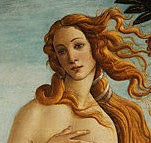Giovanni Falcone - anti-Mafia crusader
Sicilian lawyer made life's work of taking on Cosa Nostra
Giovanni Falcone, who would become known as an anti-Mafia crusader during his career as a judge and prosecuting magistrate, was born on this day in 1939 in Palermo. The son of a state clerk, he was raised in a poor district of the Sicilian city. Some of the boys with whom he played football in the street would go on to become Mafiosi but Falcone was determined from an early age that he would not be drawn into their world. Educated at the local high school, he studied law at Palermo University. In 1966, at the age of 27, he was appointed a judge in Trapani, a crime-ridden port on the west coast of Sicily and began his lifelong quest to defeat the criminal organisation. In time, Falcone became the Mafia's most feared enemy and by 1987, when he was the chief prosecutor at the so-called Maxi Trial in Palermo which convicted 342 members of the so-called Cosa Nostra, the likelihood he would be murdered meant he could not leave home without a heavily armed police escort. He worked in a bomb-proof bunker underneath the city's law courts. His home was similarly protected and when he travelled between the two it was with a convoy of armoured police cars. Read more…
_______________________________________________________________
Ezio Pinza - opera and Broadway star
Poor boy from Rome who made his home at the Met
The opera star Ezio Pinza, who had 22 seasons at the Metropolitan Opera in New York from 1926 to 1948 and sang to great acclaim at many other of the world’s most famous opera houses, was born on this day in 1892 in Rome. Pinza, a bass who was blessed with a smooth and rich voice and matinee idol looks, also had a successful career in musical theatre on Broadway and appeared in a number of Hollywood films. Born Fortunio Pinza in relative poverty in Rome, he was the seventh child born to his parents Cesare and Clelia but the first to survive. He was brought up many miles away in Ravenna, which is close to the Adriatic coast, about 85km (53 miles) from Bologna and 144km (90 miles) from Venice. He dropped out of Ravenna University but studied singing at Bologna’s Conservatorio Martini and made his opera debut at Cremona in 1914 in Bellini’s Norma. Pinza signed up to fight for his country in the First World War, after which he resumed his career in 1919. Within a short time he was invited to perform at Italy’s most prestigious opera house, Teatro alla Scala in Milan, where he came under the baton of the brilliant but demanding conductor, Arturo Toscanini. Read more…
_________________________________________________________________
Giuseppe Ayala – politician and magistrate
Judge who was part of struggle against the Mafia
Anti-Mafia prosecutor Giuseppe Ayala was born on this day in 1945 in Caltanissetta in Sicily. Ayala became well known as an anti-Mafia magistrate and anti-Mafia judge. He was a prosecutor at the so-called Maxi Trial in Palermo in 1987, which resulted in the conviction of 342 Mafiosi. He has continually raised doubts about whether it was the Mafia working alone who were responsible for the killing of his fellow anti-Mafia investigator Giovanni Falcone in 1992. The deaths of Falcone and another prominent anti-Mafia magistrate, Paolo Borsellino, also murdered by the Mafia, came a few months after the killing of Christian Democrat politician, Salvatore Lima, who was thought to be the Mafia’s man on the inside in Rome and had close links with Italy’s three-times prime minister, Giulio Andreotti. There was speculation that it suited senior figures in the Italian government that the two magistrates were killed because they knew too much about corruption at the highest level. Ayala studied at the University of Palermo and obtained a degree in jurisprudence. Afterwards he worked as a public prosecutor. Read more…
_________________________________________________________________
Domenico di Pace Beccafumi – artist
Painter from Siena experimented with rich colour
Considered one of the last true representatives of the Sienese school of painting, Domenico di Pace Beccafumi died on this day in 1551 in Siena. He is remembered for his direction of the paving of the Duomo - cathedral - of Siena between 1517 and 1544, when he made ingenious improvements to the technical processes employed for this task, which in the end took more than 150 years to complete. Domenico was born in Montaperti near Siena in about 1486. His father, Giacomo di Pace, worked on the estate of Lorenzo Beccafumi, whose surname he eventually took. Seeing his talent for drawing, Lorenzo had taken an interest in him and recommended that he learn painting from the Sienese artist, Mechero. In 1509 Di Pace Beccafumi travelled to Rome for a short period, where he learnt from artists working on the Vatican. Back in Siena, he painted religious pieces for churches and was only mildly influenced by the trends dominating the neighbouring Florentine school. He designed scenes from the Old Testament to decorate the floor of the cathedral and also painted frescoes for Palazzo Pubblico in the city. Read more…
Home















